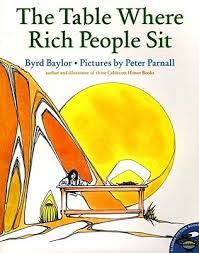 During the holiday season it was easy for both children and parents to focus on the buying and giving of presents and to lose sight of the real blessings in our families. Now in mid-January Christmas lingers only in our memories. The thrill of gift-giving has faded but the joy of friends and family gathered in celebration remains a treasured memory. As adults, we understand that the truly valuable things in life bear no pr$ce tag. Their valuable is intangible and immeasurable.
During the holiday season it was easy for both children and parents to focus on the buying and giving of presents and to lose sight of the real blessings in our families. Now in mid-January Christmas lingers only in our memories. The thrill of gift-giving has faded but the joy of friends and family gathered in celebration remains a treasured memory. As adults, we understand that the truly valuable things in life bear no pr$ce tag. Their valuable is intangible and immeasurable.
How do we help our kids balance the present moment reality and attraction of material things and help them learn to appreciate the intangible blessings of their lives?
 The Table Where Rich People Sit by Byrd Baylor and illustrated by Peter Parnall offers a gentle and appealing reminder that real wealth lies not in our possessions but in the relationships and experiences that fill our world. Like beauty, being rich, is in the eye of the beholder.
The Table Where Rich People Sit by Byrd Baylor and illustrated by Peter Parnall offers a gentle and appealing reminder that real wealth lies not in our possessions but in the relationships and experiences that fill our world. Like beauty, being rich, is in the eye of the beholder.
Written from the child’s point of view, the story focuses on her frustration with her parents. (This feeling is one with which most kids can identify at one point or another.) To her, they seem oblivious to their obvious poverty and disinterested in pursuing better-paying jobs. As the family gathers around an obviously homemade table, she recalls, “They even had a celebration when they finished it.” She is both puzzled and annoyed by their resistance to improving their financial situation, so she calls a family meeting to discuss her parents’ lack of ambition and their disinterest in the trappings of material wealth.
Her parents willingly engage in the discussion and appoint the girl the family bookkeeper.
The first thing she wants to know is how much money they earn in a year. Father advises, “We have a lot of things to think about before we add them up.” Mother says, “We don’t just take our pay in cash…”
The story continues with the parents mentioning all the intangible treasure that enriches their lives. It concludes in the girl’s words, “To tell the truth, the cash part doesn’t seem to matter anymore.” Seated at their hand-made table she decides to write her family’s story. The title comes to her easily: The Table Where Rich People Sit.
 #AQ Lens This book does a great job of demonstrating the value of a family and proving that true wealth lies not in material possessions but rather in healthy, reciprocal and loving relationships. Most importantly, it accomplishes this without preaching that kids should be grateful for their families. Instead, it concentrates on helping them see the intrinsic value of a value.
#AQ Lens This book does a great job of demonstrating the value of a family and proving that true wealth lies not in material possessions but rather in healthy, reciprocal and loving relationships. Most importantly, it accomplishes this without preaching that kids should be grateful for their families. Instead, it concentrates on helping them see the intrinsic value of a value.
Too often adopted children are told that they should feel “lucky” they were adopted or people suggest that they should be grateful for being adopted. Such advice is misguided–even if well intentioned because it trivializes the significant losses inherent in adoption. People would not think of posing such a question to a child who was not adopted and remained with his biological parents.

